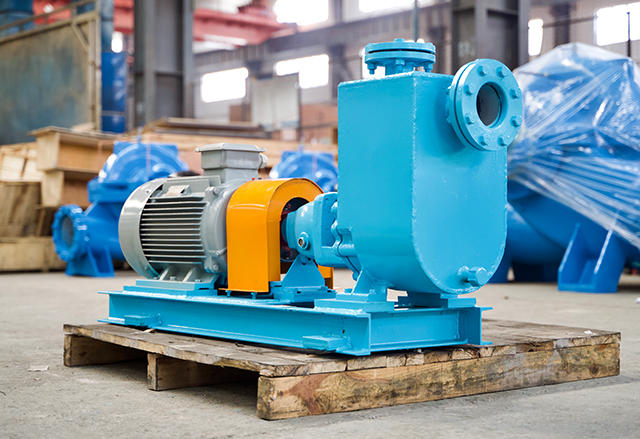Sanlian Pump Industry Group is a manufacturing enterprise based on water supply and drainage equipment. The group company integrates R&D, design, casting, production and sales, and provides customers with modern, digital and intelligent comprehensive solutions for fluid transportation and integrated systems.
Mud Pumps: The Relentless Heart of Drilling Operations
In the demanding world of drilling – whether for oil, gas, geothermal energy, or water wells – one piece of equipment stands out as absolutely indispensable: the Mud Pump. Often called the "heart" of the drilling fluid circulation system, its constant, powerful beat keeps the entire operation alive and safe.
What Does a Mud Pump Do?
Simply put, a mud pump's core mission is to circulate drilling fluid (commonly called "mud") throughout the wellbore. This involves:
-
Circulation: Forcing large volumes of mud down the drill string (through the hollow drill pipe), out through the bit nozzles at the bottom of the hole, and back up the annular space (the gap between the drill pipe and the wellbore wall) to the surface.
-
Hole Cleaning: Using the fluid's velocity and viscosity to lift rock cuttings created by the drill bit and transport them efficiently out of the hole. Without this, cuttings would accumulate, causing stuck pipe or damaging the bit.
-
Cooling & Lubrication: Cooling the hot drill bit and lubricating the entire drill string as it rotates and grinds against the formation.
-
Maintaining Hydrostatic Pressure: The weight of the fluid column in the wellbore creates pressure. This crucial pressure counteracts formation pressures, preventing influxes of oil, gas, or water into the wellbore (a "kick") and ultimately helping to prevent a catastrophic blowout.
-
Transmitting Hydraulic Power: The high-pressure fluid jetting out of the bit nozzles helps break rock and clean the bit face, directly assisting the drilling process.
Key Components of a Mud Pump:
Modern mud pumps are robust, high-pressure reciprocating positive displacement pumps. Key parts include:
-
Power End: The engine or motor that provides the driving force (often via gears and crankshafts).
-
Fluid End: Where the pumping action happens. It contains:
-
Liners: Replaceable cylindrical sleeves where the pistons move.
-
Pistons/Plungers: Driven by the power end, they create the suction and discharge strokes.
-
Valves (Suction & Discharge): One-way valves that open and close to control fluid intake and output.
-
-
Pulsation Dampeners: Devices that smooth out the pressure pulses inherent in reciprocating pumps, protecting downstream equipment.
Common Types:
-
Duplex Pump: Has two pistons/plungers. Generally simpler but produces more pulsation.
-
Triplex Pump: Has three pistons/plungers. This is the most common type today, offering smoother flow, higher pressure capability, and better efficiency than duplex pumps for similar power. Quintuplex (5 piston) pumps are also used for very high-volume applications.
Why Are They So Important?
-
Safety: Maintaining wellbore pressure is paramount for preventing blowouts.
-
Efficiency: Effective hole cleaning allows for faster, uninterrupted drilling. Cooled and lubricated equipment lasts longer.
-
Wellbore Stability: The fluid properties (density, viscosity) controlled partly by the pump's circulation help support the wellbore walls.
-
Information: Returning fluid carries vital information (cuttings, gas, temperature changes) that geologists and mud engineers analyze.
Maintenance is Key:
Mud pumps operate under extreme conditions – high pressure, abrasive fluids, and constant vibration. Regular inspection and maintenance of fluid end components (liners, pistons, valves, seals) and power end lubrication are critical for reliability and preventing costly downtime.

In Conclusion:
The mud pump is far more than just a simple pump. It's a powerful, sophisticated machine fundamental to the safety, efficiency, and success of any drilling operation. Its relentless circulation of drilling fluid performs multiple vital functions simultaneously, making it truly the beating heart without which the complex process of drilling simply cannot function. Understanding its role and ensuring its proper operation is essential for anyone involved in the drilling industry.








 English
English 中文简体
中文简体 Français
Français Español
Español Português
Português عربى
عربى




 皖公网安备34052302341647号
皖公网安备34052302341647号